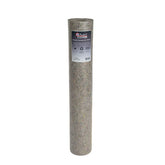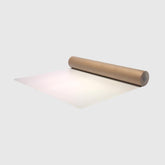5 tips for using a fabric door with zipper during renovations
Renovations can be exciting, but they often bring an unwelcome side effect: dust. It's essential to protect your living or work spaces from this nuisance, especially during messy projects like installing drywall or upgrading floors. dust door with zipper is a game-changer for keeping your environment clean and your air quality intact. These innovative barriers are designed to create a temporary seal over doorways, allowing easy access while effectively trapping dust.
Whether you work in a home or commercial space, using a plastic door A zipper can save time and effort when tidying up. However, to maximize its effectiveness, you must install and use it correctly. Here are the top five tips to get the most out of your dust door with row to be collected during renovations.
5 tips for using a dust door
Tip 1: Measure your doorway accurately
The first step to a dust door with zipper To use it effectively, accurate measurements are essential. Before purchasing, measure the height and width of the door opening where the door will be installed. Dust doors come in various sizes, so choosing the right size is crucial for a good seal.
A dust door that is too large or too small will compromise its functionality, allowing dust to escape. Use a measuring tape and double-check the dimensions to avoid errors. Remember that a properly fitting plastic door not only prevents dust but also provides a seamless passage for employees and materials.
Tip 2: Clean the surface before installation
For a zippered dust door to adhere properly, the installation surface must be clean. Dust, grease, or dirt on the door frame can weaken the adhesive or tape that holds the plastic material in place. Use a damp cloth to wipe the area thoroughly and ensure it is dry before proceeding. A zippered dust door is an effective solution for preventing renovation residue and unwanted dust in the house to minimize.
Cleaning the surface not only ensures better adhesion of the door but also ensures it stays in place during renovations. A clean installation surface can make a world of difference, especially in high-traffic areas where the uPVC door can be subject to wear and tear.
Tip 3: Place the zipper strategically
Strategic zipper placement is key to maximizing your usability dust door with zipperThe zipper provides easy access for workers and materials, but its placement should depend on your specific renovation needs. For example, if the door is frequently used to move large items, place the zipper slightly off-center to minimize wear.
Make sure the zipper is fully functional before installing it and test its movement. A poorly positioned zipper can obstruct access or make the door less effective at trapping dust. Careful placement of the zipper improves both convenience and performance.
Tip 4: Secure the edges firmly
Properly securing the edges of your dust door with a zipper is essential for maintaining an effective seal. Use high-quality adhesive tape or fasteners to firmly attach the plastic material to the door frame. Check for gaps or loose edges where dust can escape.
For added security, consider reinforcing the edges with duct tape, especially in areas prone to movement or pressure. A well-sealed plastic door prevents dust from seeping out and keeps your renovation space isolated from the rest of your home or workplace.
Tip 5: Reuse and store them properly
Many fabric doors with zippers are reusable, making them a cost-effective solution for multiple renovation projects. Carefully remove the door after you've finished your work, taking care not to damage the adhesive or tape. Clean the plastic material with a damp cloth to remove any dust or residue.
After cleaning, neatly fold the door and store it in a cool, dry place. Storing it properly will help keep your plastic door Lasts longer and remains ready for future use. By reusing your dust door, you not only save money but also reduce waste, making it an environmentally friendly choice.
Conclusion
A zippered dust door is an indispensable tool for anyone tackling renovation projects. From containing dust to providing easy access, these versatile barriers offer numerous benefits. By following these five tips—measuring accurately, cleaning surfaces, strategically placing the zipper, securing edges, and storing the door properly—we can ensure optimal performance and durability.
Whether we're homeowners or contractors, taking the time to use a uPVC door effectively can make the renovation process smoother and cleaner. With the right approach, we not only protect our environment but also improve the overall efficiency of our project.
Bee




